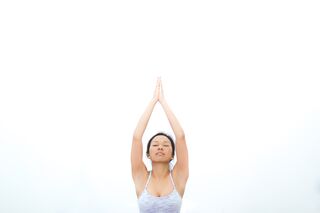Psychology
Connecting Yoga and Emotions
Did you know? There's actually a touch of psychology in yoga!
Posted April 21, 2021 Reviewed by Matt Huston

Recently I had the wonderful experience of being able to combine two of my passions: psychology and yoga.
I was really thankful to have the opportunity to blend my training as a yoga teacher with what I know as psychologist in the form of a four-week yoga-emotion workshop. When I first started as a psychologist, I actually kept my experience as a yoga teacher under wraps; I wanted to be taken seriously as a scientist and I was worried my yoga background would appear “New Age-y.” I’m so thankful that this is no longer the case, as combining psychology and yoga was a rewarding experience for both my clients and myself.
One of the most rewarding parts of the workshop for me as a clinician was to see clients opening up and letting their guard down. Being successful, somewhat private New Yorkers, clients of my practice often acknowledge that even though they “open up” during individual therapy with me, they struggle to become vulnerable with their peers—which is partly why they end up so stressed in the first place. I know as a psychologist that sharing vulnerabilities can be a healing experience, allowing people to address the root of what they are struggling with. The workshop offered a safe space for clients to share their vulnerabilities and to see other successful people acknowledging vulnerabilities too. Watching them get support and give support to each other was very moving for me.
Physicality came into play in an interesting way. In psychology, we use talk-therapy techniques that improve anxiety, mood, or connection with the self. In yoga, we use physical techniques that often produce calm, connection with the self, or other desired effects on mood. The workshop was an opportunity for the group to explore the body-mind connection in an experiential as well as discussion-based format.
We learned physical cues to relax muscles and then reconvened as a group to use talk-therapy techniques to discuss the emotions that arose when physically relaxing, and how it feels to be in a tense versus relaxed position. By gaining this awareness of the connection between our bodies and our minds, we can learn to intentionally change our physical position in order to change our emotions.
A lot of participants expressed concern about social anxiety. In order to address this, we learned about how to recognize emotions and their physical correlates in ourselves, as well as how to read emotions and physical correlates in others (by practicing in pairs). We considered this mindful awareness of emotions as an opportunity to practice social skills and self-care. Mindfulness is an important step to use to become aware of our emotions or the emotions of others; with that awareness we can “plug in” the correct technique to use based on our emotional state. Some people don’t realize they are stressed out, or that social situations tend to make them anxious, and it’s impossible to deal with if we don’t recognize it.
Lastly, something that I emphasized often was practice. I used the common analogy of “learning to build a teepee in a thunderstorm” to explain why it is important to get comfortable with these skills every day, even when we’re feeling calm. We want to practice these techniques before we need them so that we know what to do when the time comes. Meditation is called a practice because it takes a lot of time to build up the skill.
The several weeks together gave us time to build the habit and get support from one another in making it a daily routine. Additionally, it was helpful to teach the participants the difference between self-discipline and self-flagellation—mindfulness involves curiosity, creative problem-solving, and acceptance about our slip-ups, rather than being so harsh with ourselves about shortcomings that we become too distressed to make improvements. I encouraged clients to practice meditation every day, but to also be patient with themselves when they missed a day or two. This helps to keep the practice of meditation associated with positive emotions instead of guilt and frustration.
I know firsthand how beneficial both yoga and clinical psychology are for people struggling with anxiety and other issues, so it was an honor to be able to share that with others. It was so exciting to watch them learn and grow, and I found that I learned a lot from them as well.


